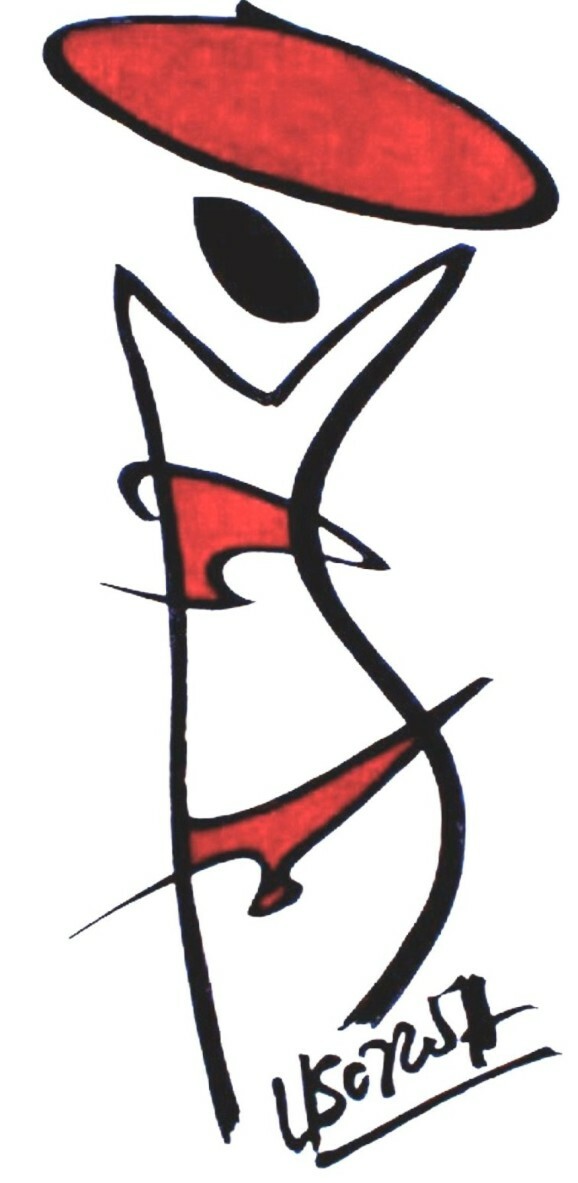BobUsorohs Architects
Design of Public and Residential Buildings/Проектирование Жилых и Общественных Здании
Sustainable Architecture
+770135978111, usoroh@yahoo.com
Design of Public and Residential Buildings/Проектирование Жилых и Общественных Здании
Sustainable Architecture
+770135978111, usoroh@yahoo.com
FROM SKETCH TO VISION
.


Bob Usoroh
Registered Architect #001046
1982-1984: OND –Architecture-The Polytechnic Calabar-Nigeria
1984-1985: Senior Draughtsman Corporate division-NITEL Lagos-Nigeria
1985-1986- Russian Language Studies-Astrakhan Russia
1986-1991-Msc with honors- Architecture and Building Institute-Almaty Kazakhstan
1991-1994-Ph. D Studies-Enhance Comfort levels in Low rise Residential Buildings in hot humid Climates-Kazakh Academy of Architecture and Construction
2001-Architecture license
2020-till Present Doctoral Research –Energy Efficient High rise Residential Buildings-Satbaev University Kazakhstan
I specialize in Energy-efficient sustainable Residential and Public Buildings in hot climates.
+770135597811
1984-1985: Senior Draughtsman Corporate division-NITEL Lagos-Nigeria
1985-1986- Russian Language Studies-Astrakhan Russia
1986-1991-Msc with honors- Architecture and Building Institute-Almaty Kazakhstan
1991-1994-Ph. D Studies-Enhance Comfort levels in Low rise Residential Buildings in hot humid Climates-Kazakh Academy of Architecture and Construction
2001-Architecture license
2020-till Present Doctoral Research –Energy Efficient High rise Residential Buildings-Satbaev University Kazakhstan
I specialize in Energy-efficient sustainable Residential and Public Buildings in hot climates.
+770135597811
ORDER A PROJECT

Current Project
sketch stage
Private house near the shores
of Atlantic Ocean -south east
Nigeria
features
free flow of internal public spaces
cross ventilation
swimming pool
arch studio
fine art studio
three bedrooms
house help room
covered verandas for outdoor rest
sketch stage
Private house near the shores
of Atlantic Ocean -south east
Nigeria
features
free flow of internal public spaces
cross ventilation
swimming pool
arch studio
fine art studio
three bedrooms
house help room
covered verandas for outdoor rest
current project
Visiting lecturers' hub

UN's principles for sustainable and inclusive urban design and architecture:
People-centrality, social responsibility and inclusivity: urban planning, design and architecture need to foster and support social responsibility and integrate diversity and equality through due consideration of the needs of individuals and households across all races, age groups, gender, cultures, abilities and income levels, including intergenerational planning.
Cultural identity, values and heritage: urban planning, design and architecture should respect the identity and cultural heritage of places and buildings as well as the cultural values and traditions of communities.
Resource efficiency and circularity: every city, urban infrastructure and building should be designed in a way that limits the use of energy, uses only sustainable energy sources, reuses rainwater and limits the use of other natural resources and reduces resource losses.
In addition, every city, urban infrastructure and building should, to the extent possible, by design: use recycled materials; reuse and requalify spaces; reduce the production of waste reuse water; and encourage food production through urban agriculture, orchards and food forests.
Safety and health: every city, urban infrastructure and building should be based on internationally recognised quality standards as well as safety standards for workers and citizens, including fire safety.
Homes should provide a comfortable, safe and healthy living space, while cities and urban spaces should be designed with the imperatives of ensuring the safety and health of citizens; providing safe and sustainable mobility systems, including rail, road, inland waterways as well as walking and meeting spaces, green areas and urban forests that are accessible to all. Port cities need to ensure that port facilities are up to international transport and safety standards.
Respect for nature and natural systems and processes: every city, urban infrastructure and building should be designed in a way that limits its impact on the ecosystem of surrounding spaces, including by respecting plants, animals, and other organisms, as well as weather and natural habitats.
This implies conducting ex-ante environmental impact assessments, allowing spaces for biodiversity and using natural materials as well as low impact production assembling and dismantling processes.
Climate neutrality: cities, urban infrastructure and buildings should be designed and requalified to minimize the associated climate footprint, by adopting creative solutions that reduce pollution and energy use; phase out unsustainable mobility systems; use modern, energy-efficient, climate-neutral systems; and integrate green energy generation systems in city designs and buildings.
People-smartness: technology and smart information and communications technology solutions should be used to improve liveability, including the most socially disadvantaged, bolster transparency and curb corruption.
Resilience, durability, functionality and foresight: city and architectural design should support solutions that make homes, buildings and urban spaces resilient to natural disasters, especially those caused by climate change, including hurricanes, droughts and wildfires, flooding and high winds; and making buildings and infrastructures durable and flexible, incorporating spatial adaptability to accommodate new conditions and usages over time.
Affordability and accessibility: cities and homes need to be affordable and accessible to all citizens. Designers need to keep this factor in mind and design high-quality environments for meeting the needs of all citizens.
Inter-disciplinary cooperation and networking: cities and urban spaces should be designed to foster cohabitation, community engagement, solidarity and social cohesion taking into account the needs of citizens across all races, age groups, gender, cultures, abilities and income levels;
Engagement: consultation with and participation of the local communities is essential for any urban project, including small, medium and large-scale projects. Continuous engagement with various stakeholders, including longitudinal research, will foster trust, ensure responsiveness to the needs of all citizens, and consolidate shared ownership of the city’s future.
People-centrality, social responsibility and inclusivity: urban planning, design and architecture need to foster and support social responsibility and integrate diversity and equality through due consideration of the needs of individuals and households across all races, age groups, gender, cultures, abilities and income levels, including intergenerational planning.
Cultural identity, values and heritage: urban planning, design and architecture should respect the identity and cultural heritage of places and buildings as well as the cultural values and traditions of communities.
Resource efficiency and circularity: every city, urban infrastructure and building should be designed in a way that limits the use of energy, uses only sustainable energy sources, reuses rainwater and limits the use of other natural resources and reduces resource losses.
In addition, every city, urban infrastructure and building should, to the extent possible, by design: use recycled materials; reuse and requalify spaces; reduce the production of waste reuse water; and encourage food production through urban agriculture, orchards and food forests.
Safety and health: every city, urban infrastructure and building should be based on internationally recognised quality standards as well as safety standards for workers and citizens, including fire safety.
Homes should provide a comfortable, safe and healthy living space, while cities and urban spaces should be designed with the imperatives of ensuring the safety and health of citizens; providing safe and sustainable mobility systems, including rail, road, inland waterways as well as walking and meeting spaces, green areas and urban forests that are accessible to all. Port cities need to ensure that port facilities are up to international transport and safety standards.
Respect for nature and natural systems and processes: every city, urban infrastructure and building should be designed in a way that limits its impact on the ecosystem of surrounding spaces, including by respecting plants, animals, and other organisms, as well as weather and natural habitats.
This implies conducting ex-ante environmental impact assessments, allowing spaces for biodiversity and using natural materials as well as low impact production assembling and dismantling processes.
Climate neutrality: cities, urban infrastructure and buildings should be designed and requalified to minimize the associated climate footprint, by adopting creative solutions that reduce pollution and energy use; phase out unsustainable mobility systems; use modern, energy-efficient, climate-neutral systems; and integrate green energy generation systems in city designs and buildings.
People-smartness: technology and smart information and communications technology solutions should be used to improve liveability, including the most socially disadvantaged, bolster transparency and curb corruption.
Resilience, durability, functionality and foresight: city and architectural design should support solutions that make homes, buildings and urban spaces resilient to natural disasters, especially those caused by climate change, including hurricanes, droughts and wildfires, flooding and high winds; and making buildings and infrastructures durable and flexible, incorporating spatial adaptability to accommodate new conditions and usages over time.
Affordability and accessibility: cities and homes need to be affordable and accessible to all citizens. Designers need to keep this factor in mind and design high-quality environments for meeting the needs of all citizens.
Inter-disciplinary cooperation and networking: cities and urban spaces should be designed to foster cohabitation, community engagement, solidarity and social cohesion taking into account the needs of citizens across all races, age groups, gender, cultures, abilities and income levels;
Engagement: consultation with and participation of the local communities is essential for any urban project, including small, medium and large-scale projects. Continuous engagement with various stakeholders, including longitudinal research, will foster trust, ensure responsiveness to the needs of all citizens, and consolidate shared ownership of the city’s future.
Private Residence -Remizovsky
Almaty
Almaty
Olga House-Almaty
Restaurant -Family park
Almaty
Almaty
Mary Kay showroom -Almaty
Apartment design-Almaty
Dental Clinic-Almaty

medical center-almaty
Ilnura House-Almaty
AWARDS

FIRST PLACE CERTIFICATE 2014
SECOND PLACE DIPLOMA 2013
BOOKS BY BOB USOROH
Unlock the boundless realm of creative imagination with 'MY LINES-PUBLIC SPACES,' a masterpiece by award-winning architect and artist, Bob Usoroh. Through 114 freehand architectural forms, Usoroh's finger-drawn creations on his iPhone canvas defy convention, transcending traditional boundaries. This collection is an inspiring journey into the dynamic interplay of lines and energy, a must-have for architects, aspiring designers, and graphic artists seeking to ignite their own creative passions. Each stroke is a testament to the limitless potential when artistry meets architectural brilliance. Embark on this visual odyssey and let your imagination soar." https://bobusorohs.com/bookshop

Contacts
We want to make friends with our clients, so we are happy to answer your questions.
Almaty -Kazakhstan
Phone: +77013597811
Email: usoroh@yahoo.com
Phone: +77013597811
Email: usoroh@yahoo.com
All photo and video materials belong to their owners and are used for demonstration purposes only. Please do not use them in commercial projects.

